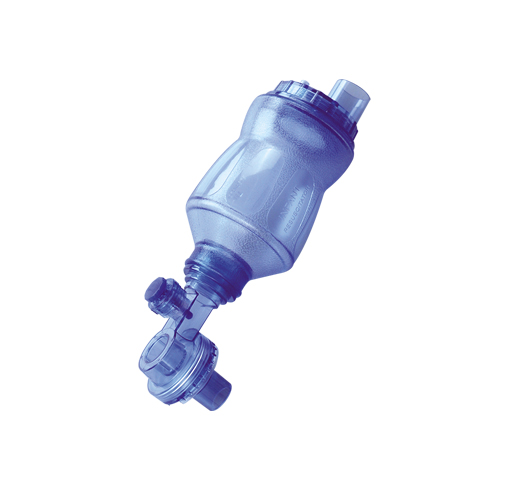-
Endoskopowe produkty i akcesoria
- Endoskopowy zestaw do ssania i nawadniania
- Rury wdmuchiwania
- Veress Needle
- Wysokoprzepływowy podgrzewany przewód wdechowy
- Zawory endoskopowe jednorazowego użytku
-
Rękawy do aparatu endoskopowego
- Szybka zmiana endoskopowa kamera Drape
- Wysokiej rozdzielczości endoskopowa kamera Drape
- Elastomerowa końcówka endoskopowa
- Składana pierścieniowa endoskopowa zasłona na aparat
- Teleskopowo składana opaska na aparat endoskopowy z końcową szybką zmianą
- Teleskopowo złożony rękaw kamery endoskopowej z elastycznym końcem
- Zestaw do nawadniania artroskopii
- Rury nawadniające
- Zakrętka systemu płukania
- Szczotki do czyszczenia kanału endoskopii
- Pułapka na polip
-
Układ oddechowy
- Kaniula z tlenem nosa
- Maska Capnography
- Maska tlenowa
- Maska bez ponownego oddychania
- Maska Venturi
- Maska multi-vent
- Maska nebulizatora
- Nebulizator z kawałkiem ust
- Maska tracheostomijna
- Jednorazowe Ezscope™Pro Broncho
- Ustnik zaworu jednokierunkowego
- Zacisk na nos
- ABC ustnik i zestaw filtrów
- Ćwiczenia oddechowe
- Zamknięty cewnik ssący
- Cewnik ssący
- Zawór próżniowy sterujący śluzem
- Pułapka na Śluz
- Śluz ekstraktor
- Śluz z osłonką ochronną
- Jednorazowa rurka aspiracyjna
- Znieczulenie
-
Zarządzanie dróg oddechowych
- Droga oddechowa jamy ustnej i gardła
- Droga oddechowa jamy nosowej gardła
-
Maska krtani dróg oddechowych
- Standardowa maska krtaniowa z PVC
- Wzmocniona maska krtaniowa z PVC
- Maska krtaniowa PVC 90 stopni dróg oddechowych
- Standardowa silikonowa maska krtaniowa dróg oddechowych
- Wzmocniona silikonowa maska krtaniowa dróg oddechowych
- Maska krtani wielokrotnego użytku dróg oddechowych
- Wielokrotnego użytku wzmocniona maska krtani dróg oddechowych
-
Rurka tracheostomijna
- Niebiańska regulowana rurka tracheostomijna
- Niebiańska rurka trachestomii z neossaniem
- Niebiańska wzmocniona rurka trachestomii
- Rurka tracheostomijna Serenity
- Zestaw probówki serenity tracheostomii
- Rurka tracheostomijna Serenity z neoSusaniem
- Zestaw probówek tracheostomijnych Serenity z neoSuction
- Rurka tracheostomijna fenestrowana Grasmere
- Zestaw probówki tracheostomijnej Grasmere Fenestrowany
- Azure Nieregulowana rurka tracheostomijna
- Rurka tracheostomijna typu S
- Rurka tracheostomijna Pedi
- Rurka dotchawicza
- Intchawicze rurkowe
- Intubating Stylet
-
Chirurgia ssąca
- Flexi-clear Yankauer Uchwyt
-
Uchwyt Yankauer
- Uchwyt SpeedFlow Yankauer
- Zwykła końcówka Yankauer
- Końcówka kołnierza Yankauer
- Zwężająca się końcówka Yankauer
- Włączanie/wyłączanie Yankauer ze zwykłą końcówką
- Włączanie/wyłączanie Yankauer ze zwężanymi końcówkami
- Końcówka żarówki Yankauer
- Koronka Yankauer
- Elastyczny uchwyt ssący Poole
- CH30 Uchwyt Yankauer i rurka łącząca ssanie CH35
- Dwuczęściowa Plain Tip Yankauer
- Kaczka-bill Tip Yankauer
- Uchwyt ssący Poole
- Rura ssąca ENT
- Sonda ssąca
- Ortopedyczne/ortopedyczne Yankauer
- Końcówka chirurgiczna aspiratora
- Rura łącząca ssanie
- Miękka wkładka do kanistra ssącego
- Sztywny kanister ssący
- Kanister ssący z zestawem filtra
- Pojemnik zewnętrzny wielokrotnego użytku
- System odwadniania ran próżniowych
- Ligator z hemoroidami
- Złącze
- Adapter kontroli próżniowej
- Kardiochirurgia
- Produkty i akcesoria laparaskopowe
- Ginekologia
-
Urologia
- CathVantage™Przenośny hydrofilowy cewnik przerywany
-
Zestaw do nawadniania cysta/pęcherza
- M-łatwy zestaw do nawadniania pęcherza
- Zestaw do nawadniania pęcherza B-cylind
- Zestaw do nawadniania pęcherza S-tur
- Zestaw do nawadniania pęcherza S-uni
- Zestaw do nawadniania pęcherza B-uro
- Zestaw do nawadniania pęcherza Premi
- Zestaw do nawadniania pęcherza J-pump
- Zestaw do nawadniania pęcherza J-tur
- Zestaw do nawadniania pęcherza z pompą H
- Zestaw do nawadniania pęcherza Sop-flow
- Zestaw do nawadniania klonu
- Zestaw do nawadniania piwonii
- Cewnik Nelaton
- Torba odwadniająca mocz
- Torba na nogi do drenażu moczu
- Zestawy do lewatywy
- Zestawy do kąpieli Sitz
- Kliknij Seal Specimen Container
- Silikonowy męski cewnik
- Cewnik czop i adapter
- Trójdrożny kogut stop
- Zestaw do nawadniania drzewa sandałowego
- Zestaw do nawadniania Freesia
- Zestaw do nawadniania żonkila
-
Chirurgia ogólna
- System Atomizer perfuzji
- Rurka ze zlewu żołądka
- Hemostatyczny aplikator proszkowy
- Zasława magnetyczna
- Chirurgiczny immobilizer do rąk
- Administracja zestaw do krwi
- Zestaw do nawadniania dentystycznego
- Strzykawka do ucha/wrzodów
- Strzykawka do nawadniania żarówek
- Strzykawka do nawadniania Toomey
- Strzykawka do nawadniania zębów
- Urządzenie dekantujące
- Mieszanie kaniuli
- Urządzenie do atomizacji błony śluzowej
- Umywalka/Umywalka
- Osłona uchwytu aparatu
- Lekka osłona uchwytu
- Szczotka medyczna
- Gąbka w sztyfcie
- Szew Retriever
- Licznik igieł
- Jednorazowa rurka kalibracyjna
- Zaparzacz ciśnieniowy
- Czapka z heparyną
- Osłona ochronna
- Strzykawka do nawadniania żarówek 100ml
- Marker twardniarski
- Chirurgiczny uchwyt światła
- Odżywianie dojelitowe
- Trwały sprzęt medyczny
- Sprzęt ochrony osobistej
- Produkty COVID-19
- PVC-FREE urządzenie medyczne
- Dział E.N.T
- Rozwiązania do zarządzania temperaturą
- Operacja
- System obsługi pacjenta
- Nagły wypadek
-
-
 SZPITALAR 2024Apr 28 , 2024
SZPITALAR 2024Apr 28 , 2024 -
-
-
Ręczny resuscytator
Ręczny resuscytator to urządzenie, które wykorzystuje dodatnie ciśnienie do nadmuchania płuc nieprzytomnej osoby, która nie oddycha, w celu utrzymania ich natlenienia i życia. Nasz ręczny resuscytator został zaprojektowany, aby zapewnić skuteczną pomoc w oddychaniu i komfort pacjenta. Jego prosta i bezpieczna konstrukcja sprawia, że jest pożądany do stosowania w ostrych sytuacjach.
Rodzaj ręcznego resuscytatora
What is a Manual Resuscitator Used For?
Manual resuscitators, also known as bag valve masks (BVMs), play a critical role in emergency medicine and patient care. They are essential tools used for providing ventilation to individuals who are not breathing or are not breathing adequately. The primary purpose of a manual resuscitator is to ensure that oxygen is delivered to the lungs of a patient in situations where natural breathing is compromised.
1.Emergency Respiratory Support: In cases of respiratory arrest or failure, manual resuscitators are used to manually pump oxygen into the patient's lungs. This is crucial in emergency settings, such as cardiac arrests, drownings, drug overdoses, or any situation where a patient's breathing is inadequate.
2.Pre-Hospital Care: Paramedics and emergency medical technicians commonly use manual resuscitators in pre-hospital settings. They are a key component of emergency response equipment in ambulances, providing a lifeline to patients while they are transported to medical facilities.
3.Anesthesia and Surgery: In surgical settings, manual resuscitators are used during anesthesia, especially in situations where mechanical ventilators are not available or suitable. They provide a controlled delivery of oxygen and anesthetic gases to patients under sedation.
4.Neonatal and Pediatric Use: In neonatal and pediatric care, manual resuscitators are used for newborns and children who require respiratory support. These resuscitators are specially designed to meet the delicate and precise requirements of young patients.
5.Supplemental Oxygen Delivery: Besides providing ventilation, manual resuscitators can also be used to deliver supplemental oxygen to patients who can breathe independently but need additional oxygen support due to conditions like Chronic Obstructive Pulmonary Disease (COPD) or severe asthma.
In essence, manual resuscitators are versatile and life-saving devices in various medical scenarios. Their ability to provide immediate respiratory support makes them indispensable in both emergency and planned medical procedures.
Exploring the Unique Features of GCmedica PVC and Silicone Resuscitators
In the realm of emergency medical equipment, the quality, design, and functionality of resuscitators are paramount. GCmedica has set a new standard in this field with its innovative PVC and Silicone resuscitators, designed to meet and exceed the demands of medical professionals in various emergency scenarios.
1.Material Quality and Durability: The GCmedica resuscitators are made from high-grade PVC and Silicone, materials known for their durability and flexibility. These materials ensure the resuscitators can withstand the rigors of repeated use in high-stress environments. The resilience of these materials also contributes to their longevity, making them a cost-effective option for medical facilities.
2.Ergonomic Design: Understanding the critical nature of ease of use in emergency situations, GCmedica has meticulously designed these resuscitators with ergonomics in mind. The design facilitates easy handling and operation, reducing fatigue for medical professionals during prolonged use. This ergonomic focus extends to all aspects of the resuscitator, including the mask, bag, and valves, ensuring efficient and effective ventilation with minimal effort.
3.Enhanced User Experience: The user experience is significantly enhanced by features like the transparent mask, which allows for better patient monitoring. The tactile and visual feedback is crucial in emergency scenarios. Additionally, the soft yet sturdy bag provides a reliable feel, ensuring precise control over ventilation.
4.Compliance with Safety Standards: Safety is a non-negotiable aspect of medical device manufacturing, and GCmedica resuscitators comply with all relevant safety standards. This compliance assures healthcare providers of the device's reliability and effectiveness in critical care situations.
5.Specific Attributes for Enhanced Performance: GCmedica has incorporated various attributes to boost the performance of their resuscitators. For instance, the valve design is optimized for smooth operation and efficient air flow, minimizing the risk of airway pressure buildup. The resuscitators are also adaptable for use with oxygen reservoirs, enhancing their functionality in different medical situations.
These unique features make GCmedica's PVC and Silicone resuscitators not just tools but lifelines in emergency medical care. Their design and functionality reflect a deep understanding of the challenges faced in emergency scenarios, offering solutions that are both innovative and practical.
FAQs About Manual Resuscitators
Q1:How does a manual resuscitator work?
A1:A manual resuscitator, or bag valve mask, is a handheld device used to provide positive pressure ventilation to patients who are not breathing or breathing insufficiently. The device consists of a self-inflating bag, a one-way valve, and a mask. When the bag is squeezed, air (or oxygen from an attached supply) is forced through the valve and into the patient's lungs. When the bag is released, it reinflates automatically, drawing in air or oxygen for the next breath.
Q2:What are the hazards of manual resuscitators?
A2:While manual resuscitators are critical in emergency care, they carry potential hazards if not used correctly. These include the risk of overinflating the lungs, which can lead to barotrauma or volutrauma. Inadequate ventilation can occur if the bag is not squeezed properly. There's also the risk of gastric insufflation, where air is forced into the stomach, potentially leading to vomiting and aspiration.
Q3:What are the benefits of using a manual resuscitator?
A3:Manual resuscitators provide immediate respiratory support in emergency situations where mechanical ventilation is not available. They are portable, do not require electricity, and can be used in various settings, from hospitals to remote locations. These devices allow for controlled oxygen delivery and are adaptable to patients of different ages and sizes, making them versatile tools in emergency care.
Q4:How many liters of oxygen does a manual resuscitator use?
A4:The amount of oxygen a manual resuscitator uses depends on the bag size and the oxygen supply settings. Adult resuscitators typically have a bag volume of about 1,000 to 1,600 milliliters and can deliver from 500 to 800 milliliters of air (or oxygen) per breath. When connected to an oxygen supply, the device can deliver concentrations of 90% to 100% oxygen, typically at a flow rate of 10 to 15 liters per minute.




 +
+